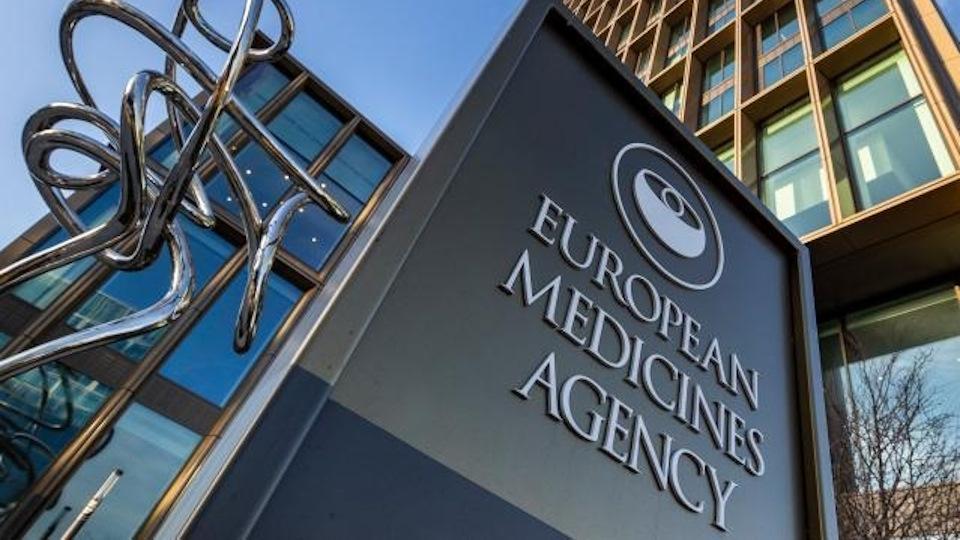Fast-track appraisals and Managed Access Agreements

Experts discuss the possible effectiveness of England’s proposed ‘fast-track’ appraisals for new treatments, plus the development and impact of Managed Access Agreements. This is the second article in a two-part report covering a recent Pharmaceutical Directors’ Club meeting in London.
One initiative now attracting global interest is the consultation currently underway between NHS England (NHSE) and the National Institute for Health and Care Excellence (NICE), on plans to introduce a ‘fast track’ option for appraising new products which offer exceptional value for money.
Up to 13 January 2017, the agencies are consulting on plans for faster and ‘lighter touch’ appraisal of new treatments with a cost per quality-adjusted life year (QALY) of up to £10,000. NICE would publish final guidance for a product recommended through the fast track as soon as it received its licence, and NHSE would provide funding within 30 days of the final guidance, instead of the current 90 days.
The consultation also covers proposals to introduce a new cost-effectiveness level of £100,000 per QALY, below which highly specialised treatments appraised by NICE would automatically qualify for NHS funding.
NICE’s Highly Specialised Technology (HST) programme, which looks at treatments for very rare diseases that are commissioned nationally by NHSE, does not have a cost-effectiveness level at present, and this makes it difficult for companies to know how to frame their offer to the NHS, the consultation document notes.
Patients ‘must fight for £100,000 threshold’
This latter proposal has been welcomed by a leading rare disease charity, but a spokeswoman for the group told the PDC that it was vital that other stakeholders did their bit: “I beg of industry to look at their pricing, but if a drug is a lifesaver, we have to fight for this threshold. And organisations representing ultra-rare diseases must get involved, get their voices heard – it’s in all our interests that they make a response,” she said.
However, other experts warned that the proposals could worsen the serious problems of access to treatment already experienced by people with rare diseases. According to one leading industry figure, it was highly unlikely that the cost per QALY of any rare disease treatments would be £10,000 or less, thus making them ineligible for the proposed fast-track appraisal route. Moreover, evidence suggests that none of the products that have gone through NICE’s HST programme so far would has a cost per QALY of £100,000 or less.
Therefore, if these proposals were implemented, not one of the rare disease products currently in this expert’s company’s R&D pipeline would launch in the UK.
Currently, HSTs for very small patient populations (e.g. a population of less than 500 with the condition in England) are treated differently in the medicines appraisal process. They have never been assessed using cost per QALY calculations, for a variety of reasons including the limited randomised control trial data, the heterogeneity of the patient population, uncertainty around the natural history of the disease and the lack of sensitivity of the standard utility measures for orphan diseases, he continued.
He also condemned the consultation’s proposal to set a ‘budget impact threshold’ of £20 million a year to help manage the introduction of cost-effective, but high cost, treatments. This would create even further delays and obstacles for developers of rare disease medicines and, he argued, was unnecessary, given that the Pharmaceutical Price Regulation Scheme (PPRS) already provided a cap on the overall drugs budget, with industry paying a rebate on spending over and above it.
Proper use of this mechanism, introduced three years ago, should mean that no other budget control measures were needed to limit government risk. But, he said, the PPRS cap was still not being used to improve access – even though it would improve the public’s health at no cost to the government.
Post-Brexit concerns
Concerns were expressed by speakers and delegates that, post-Brexit, continued weakness in Sterling’s value could lead manufacturers to abandon the UK as an early- or first-launch market. “Continuing weakness of the pound would break companies’ global pricing policy – it completely outweighs the economic modelling done for new products,” one industry leader warned.
However, one analyst was not so sure. “UK HTA processes are world-class; they set the benchmark and, while they will come under scrutiny post-Brexit, if they ain’t broke, why would we want to fix them?” he asked. “And with the Earlier Access process, an early ‘yes’ shows confidence in the data. Earlier access means discounts, breaking global pricing policies – some companies will accept this because an early OK from NICE is so important,” he pointed out.
Companies that decide not to launch, or to withdraw a product from the UK post-Brexit, will face very serious reputational damage, a leading patient advocate cautioned.
“A company will be challenged if it says it is withdrawing from the UK market, given the patient power we have here, and especially in the area of orphan drugs. The pressure will be on to prove and justify a product’s withdrawal from the market, and simply stating that it is ‘not economically viable’ just won’t wash,” she stated.
Managed Access Agreements
Such damage, to both patients and industry, could be avoided through Managed Access Agreements (MAA), a new process through which, following agreement between NHSE and NICE, patients can receive new treatments while long-term data on them is still being gathered, at substantially discounted cost and before final funding decisions are taken.
The first MAA was agreed in November 2015 for the use of BioMarin’s Vimizim (elosulfase alfa) in the treatment of Morquio A Syndrome (MPSIVA), a very rare inherited lysosomal storage disease affecting just 105 children and young adults across the UK – 88 of them in England. The MAA was signed by NHSE, NICE, BioMarin, a clinical expert and a patient organisation.
Before the EMA granted Vimizim marketing approval in April 2014, patients with Morquio could only be offered products to manage their symptoms. Vimizim is the first and only treatment to address the underlying causes of the condition, but because of a lack of information on long-term treatment and benefits of the drug, which costs around £395,000 per patient per year, funding for it was not forthcoming in England. BioMarin made it available free on compassionate grounds for almost a year but, by the end of 2014, no official decision had been made on interim funding for the drug until a final decision could be made, to the fury of patients and their supporters.
Legal challenge to NHSE
In December 2014, a meeting of NHSE’s Clinical Priorities Advisory Group (CPAG), which had been scheduled to decide on which treatments for serious conditions should be prioritised for funding in England during 2015-16, was abruptly postponed. Reportedly, this was due to NHSE having received a solicitors’ letter stating that the ‘scorecard’ to be used at the meeting to compare the treatments and decide which should go forward for prioritisation contained ‘an inbuilt bias against commissioning decisions for rare diseases’ and that a judicial review would be sought to stop its use.
Then, in July 2015, NHSE announced that, at the conclusion of NICE’s HST appraisal process on Vimizim, a final funding decision on the drug would be made.
Then, in December, NICE recommended Vimizim as a treatment for Morquio A Syndrome. ‘The combined funding arrangements specified in the Managed Access Agreement offered acceptable value for money in the context of the uncertainty of the clinical benefits and will be used to inform a future review of this guidance’, NICE reported.
Patient groups had long been unhappy about NHSE’s ‘scorecard’, describing it as ‘an unlawful process more akin to a lottery’.
One advocate involved in the Morquio A campaign, said: “NHSE’s process was flawed because it introduced a scorecard which you had to fulfil in order to go forward to prioritisation. No high-cost drug has ever got through this process and none ever will – the process is not fit for purpose for them. We challenged the scorecard – we took this to judicial review, which resulted in us being able to stop the process, after 15 months of hard campaigning.”
But developing the MAA required “thinking outside the box. And we were told that it was this – the MAA – or a ‘no’,” she added.
Campaigners also warned of the potential damage to business in the UK if it continued to lag behind other nations in agreeing funding for new medicines in this way – particularly those like Vimizim, for which England was a leading centre for the drug’s development. In a letter sent to NHSE in March 2015, as the campaign grew for a decision on the drug’s funding, BioMarin had pointed out that ‘England is the sole country which participated in the multi-national [Vimizim] phase 3 clinical trial that has failed to make a provision for treating patients post trial conclusion and 54 weeks post EMA approval’.
Failure by the government to keep its part of the bargain by not funding such treatments would simply drive investment elsewhere, advocates stated.
Second MAA
A second MAA has now been agreed. In July 2016, NHSE and NICE agreed that PTC Therapeutics’ Translarna (ataluren) should be available for the treatment of children aged five and over with Duchenne muscular dystrophy (DMD) caused by a nonsense mutation. The deal will run for five years, and includes an outcomes-based incentive for the manufacturer as well as a mechanism to monitor how well the medicine has worked in practice before future funding decisions are taken.
Observers hope that these, and other MAAs, will not only enable patients with rarer diseases to access effective treatments much earlier, but also that the cost element will have wider beneficial effects across the NHS, where patients are being denied long-standing treatments for widespread illnesses purely on grounds of cost.
“The NHS budget on biologic drugs and rare disease treatments is out of control, but its budget for traditional medicine, such as heart failure treatments, is being tightly controlled. And for these drugs there is huge variability in implementation of NICE guidance. People are dragging their heels, implementing as late as possible,” observed one attendee, adding: “For these treatments, NICE is not an enabler, it is a wish list.”
About the author:
Lynne Taylor is a freelance writer and editor specialising in pharmaceutical issues.
Read the first part of this report:
High-value, high-cost drugs: how to pay for them
This report covers the discussion at the November 2016 Pharmaceutical Directors’ Club (PDC) meeting. The PDC is an independent, issues-driven forum for senior executives, which meets three times a year. It is organised by an industry executive steering group that proposes and then commissions, research among 600 industry directors, as the basis for the following meeting.
The next meeting takes place on 27 April 2017, in London. Contact Jill Payne, jill@ptbusinessgroups.com to participate in the research or attend.











